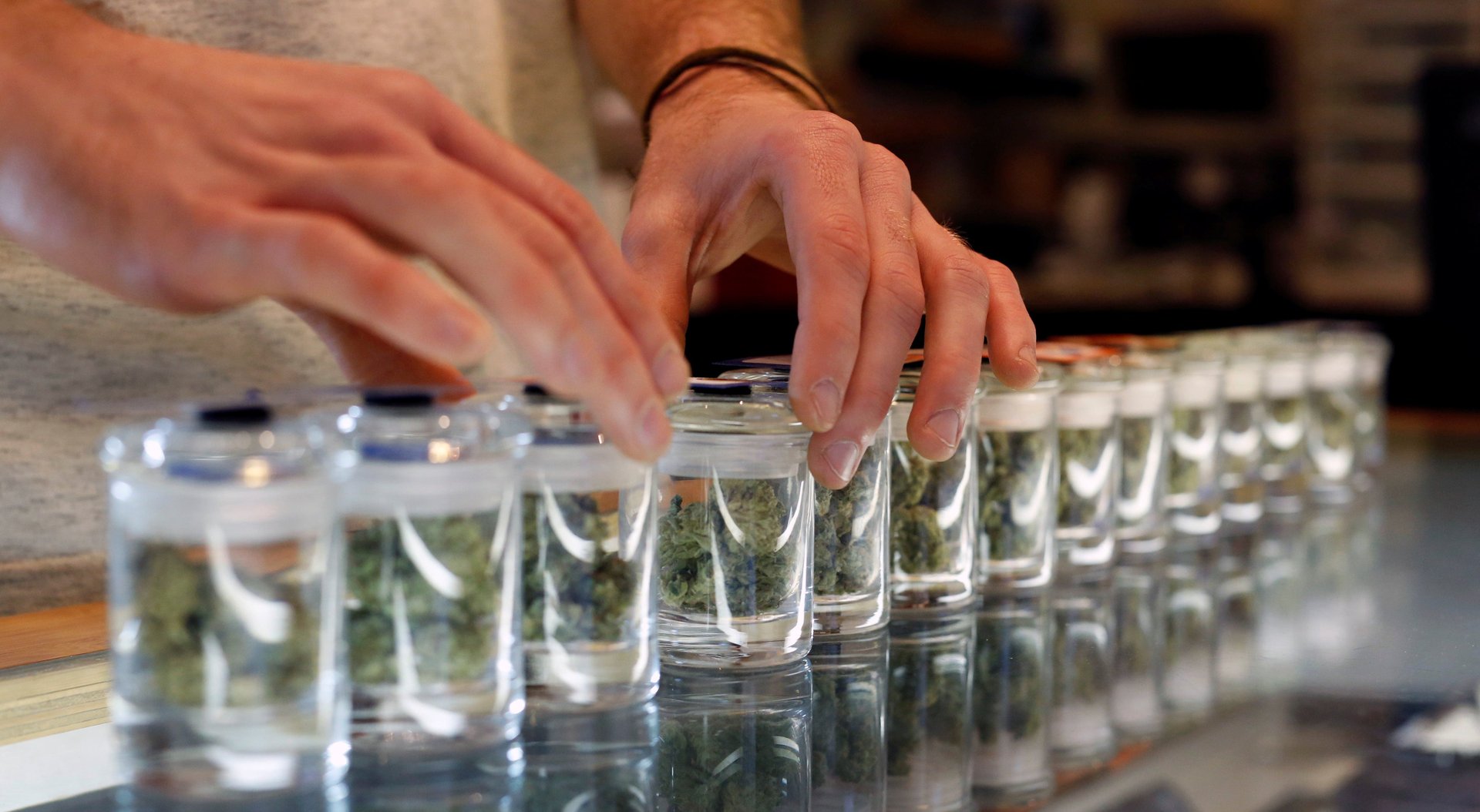One in every five Americans is about to get legally high AF after this election
In the early hours of Nov. 9, Americans found out that their next president is Donald Trump; they also learned that marijuana’s slow drive to nationwide legality had shifted into the next gear.


In the early hours of Nov. 9, Americans found out that their next president is Donald Trump; they also learned that marijuana’s slow drive to nationwide legality had shifted into the next gear.
These two facts may seem incongruous, but that’s only if you’re stuck in 20th-century politics. In 2016, marijuana has become one of the least contentious matters in US partisan politics, and is likely the issue on which most liberals find Trump to be least offensive.
On Nov. 8, which included not only presidential and congressional elections but ballot initiatives in 35 states, voters in Arkansas, Florida, and North Dakota made it legal for doctors to prescribe medical marijuana to their patients. Montana voted to ease recent restrictions on its decade-old medical marijuana law. That, for the first time, means smoking weed is legal, at least for medical and in some cases for recreational purposes, in 30 states.
Perhaps more importantly, four states voted to pass new laws that make marijuana use equivalent to liquor consumption. In California, Massachusetts, Maine, and Nevada, it is now legal for anyone over 21 years old to smoke pot.
Those states join Alaska, Colorado, Oregon, Washington, and the District of Columbia in a sort of loose coalition strongly challenging the federal government, which still classifies marijuana as a Schedule I drug, meaning it has “no currently accepted medical use” and a “high potential for abuse.” The Nov. 8 votes create a strong western bloc—the entire Pacific coastline is now on board with legal weed—and establishes a stronghold in the northeast, where Massachusetts could set the agenda for other liberal states.
Of the nine states where weed was on the ballot, eight made access to the plant easier. Only in Arizona—where medical marijuana is already legal, and which was considering legalizing recreational use—did a new law not pass.
That’s less surprising than it seems at first glance. Legalization of marijuana is one of the few issues on which Republicans and Democrats appear to be coming together. While Democrats and Independents are still far more likely than Republicans to favor legalizing recreational use, support in both parties is increasing sharply:
This shift is due largely to growing research into marijuana and awareness that it can have health benefits and few risks. But it’s also in part due to a growing recognition that legalizing a robust underground pot industry could provide serious fuel for local economies.
Just last month, the Marijuana Policy Group published a report (pdf) crediting legal weed in Colorado with creating some 18,000 full-time jobs and adding about $2.4 billion to the state’s economy in 2015. The five states that just legalized weed could therefore be in for a financial windfall. All of the new laws passed on Nov. 8 include state taxes on retail marijuana sales: 15% in California and Nevada, 10% in Maine, and 3.5% in Massachusetts.
It’s not entirely clear where president-elect Donald Trump stands on the issue. He has said he believes “100%” in the medical value of marijuana, and has also made clear that he wouldn’t interfere with states’ rights to set their own marijuana-related laws and agendas.
But what about the federal restrictions? The CARERS Act, introduced in the Senate in March 2015, would move marijuana from Schedule I to Schedule II, allowing doctors to prescribe it, but it has been stuck in committee. Since the Drug Enforcement Administration (DEA) is part of the executive branch of government, a Trump appointee as DEA head could bypass the legislative branch and make the schedule change directly. But Trump hasn’t made made his drug policy (or many others) clear yet.
Even moving marijuana to Schedule II would still be a far cry from allowing it for recreational use, though. And it would still trail behind changing public opinion. According to Pew Research, in 2015, 53% of Americans supported legalizing marijuana for medical or recreational use, and 44% were opposed.
The bipartisan support for legal recreational weed may make its continued federal criminalization untenable. On Nov. 4, President Barack Obama explained on TV the challenges the new legalization laws would create for federal regulators:
“You’ll now have a fifth of the country that’s operating under one set of laws and four-fifths in another. The Justice Department, DEA, FBI, for them to try to straddle and figure out how they’re supposed to enforce laws in some places and not in others, they’re going to guard against transporting these drugs across state lines—you’ve got the entire Pacific Corridor where this is legal. That is not going to be tenable.”
Given the financial incentives, and the fact that over 21% of Americans now live in a state that says they have the legal right to get high for fun, it’s likely now a question of when, and not if, the rest of the country will follow suit.
Meanwhile, all nine states and districts where weed is is now legal—California, Massachusetts, Maine, Nevada, Alaska, Colorado, Oregon, Washington, and DC—voted for the losing candidate, Hillary Clinton, last night. At least they will now have a way to ease the anxiety of life under Republican leadership.
Correction: An earlier version of this item omitted Ohio as a medical marijuana state.